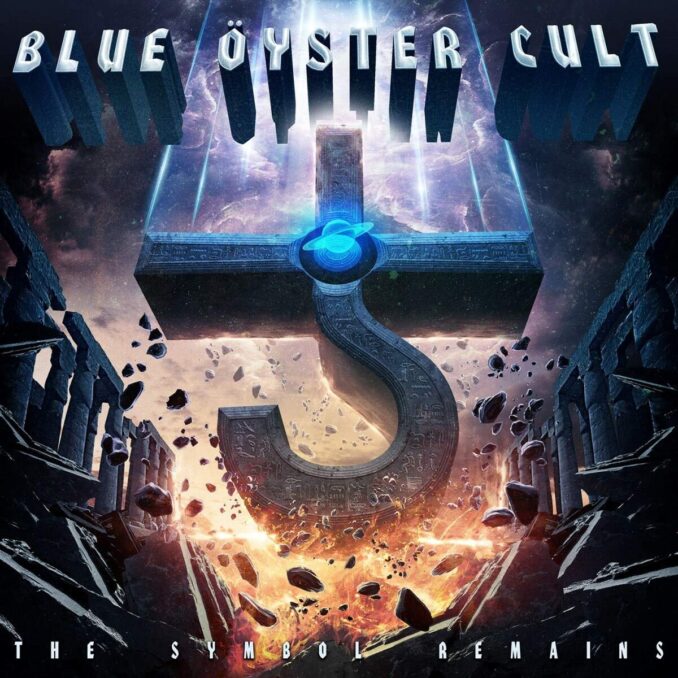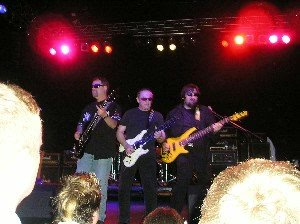
- BLUE ÖYSTER CULT - The Symbol Remains - 9/109/10
Summary
Frontiers Music
Release date: October 9, 2020
User Review
( votes)Nineteen years have passed between the release of last Blue Öyster Cult album, Curse Of The Hidden Mirror, and October 2020’s The Symbol Remains. The players have changed, mainstays Eric Bloom and Buck Dharma and a returning Danny Miranda on bass are joined by long-time touring members Richie Castellano and Jules Radino, both of whom appear for the first time on a BÖC studio album. Castellano, who wasn’t even born when Bloom first collided with Dharma and the other future BÖC members in Soft White Underbelly, even takes lead vocal duties on three of Symbol‘s fourteen songs. Symbol is also only the second of BÖC’s fifteen studio albums not to feature the keyboards of Allen Lanier, who sadly passed from complications from C.O.P.D. in 2013. The Symbol may remain, but with so much time passed, and so many changes to the band, can the idiosyncratic magic of BÖC’s music also remain?
Emphatically, yes. The critical elements–esoterically arcane lyricism, top-shelf musicianship propelled by Dharma’s fluidly innovative playing, and the classic emotive dissonance between the “Bloom songs” and the “Dharma songs” are all in full display. This difference in tone between Bloom and Dharma is one of the reasons BÖC is best appreciated as an “album” band despite having charted many massive singles over their decades-long career of evil. Bloom’s ominous and sinister delivery, grown more raspy in time, provides an exceptional foil for Dharma’s spectral, spooky smooth vocal style. Both lurk in the darkness, but Bloom is a monster and Dharma is a ghost.
BÖC takes full advantage of these different but shared perspectives with the first two cuts off the album, Bloom’s “That Was Me”, where he gleefully takes credit for all manner of major and minor acts of rottenness, and Dharma’s labyrinthine “Box In My Head”. Both tracks feature another critical element of BÖC’s enduring mystique, namely the lyrics of author and frequent contributor John Shirley. BÖC have never been shy about outside collaboration for their songs, and having authors like Shirley (who co-writes with Dharma one other song on Symbol, the hilarious and sobering “Florida Man”), Michael Moorcock, and Jim Carroll, among others.
Castellano also has a writing credit for “That Was Me” and either contributes to or has sole writing credit on six other tunes, fully half of the track list on the album. One of his solo credits is the exceptional “The Alchemist”, which the band wisely gave to Bloom to sing. This dark cut features a classic Cult narrative story line and an unbelievably Thrash-y breakdown. Castellano appears to be the sort of recruit who injects new life and energy into an established, veteran band– he writes, he plays, he sings, he’s even credited as the Chief Engineer. With Miranda and Radino providing the rhythmic bedrock, and the original Cultists in fine form, he seems to be both the glue and fuel for The Symbol Remains.
Whatever its source, the singular Blue Öyster Cult magic permeates every cut on The Symbol Remains. Dharma is particularly inspired on Symbol. There’s the tandem lines he bounces off Castellano on “The Alchemist”, the mad Psychobilly runs on “Train True (Lennie’s Song)”, the Surf-y breaks on “Nightmare Epiphany”, and the short but genius solos on “Secret Road”–all solid evidence of his utter mastery of the craft. Truly, he’s got to be Rock’s most criminally underappreciated guitarist, and Blue Öyster Cult Rock’s most underappreciated band. Though cited by a whole host of Rock and Metal’s brightest lights as a foundational influence, they fail to loom as large in the public consciousness as many of their early contemporaries. In a just world, delivering an album as strong as The Symbol Remains would help reinstate them to their rightful status as one of the idiom’s most crucial recording artists.
One final plug; that’s original Cult member Albert Bouchard on backing vocals and cowbell–yes, cowbell–on “That Was Me.”




Be the first to comment